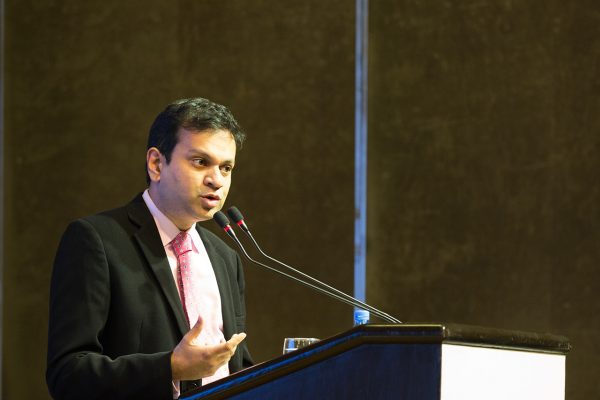Reading Time: 2 minutes
The simple brick building offered a cool reprieve from midday temperatures approaching 120F (50C). Inside, amid laughter and song, I was drawn to boy’s face outside the window of this BRAC primary school in Rumbek, South Sudan, clutching the wire screen to peer inside. He along with four other children had just been asked to leave the classroom.

Looking outside the window at a BRAC primary school in Rumbek, South Sudan. (Photo: BRAC/Manisha Bhinge)
The simple brick building offered a cool reprieve from midday temperatures approaching 120F (50C). Inside, amid laughter and song, I was drawn to boy’s face outside the window of this BRAC primary school in Rumbek, South Sudan, clutching the wire screen to peer inside. He along with four other children had just been asked to leave the classroom.
The reason? Too many prospective students, not enough schools. A reminder of the thirst for opportunity and hope in the young population of a young country, where the need seems to always outstrip resources.
I’m in South Sudan visiting one of the 300 BRAC schools under a project that qualifies for a BRAC Impact Grant, “Equipping South Sudanese communities to educate future leaders.”
A total of 35 students, ages 8 to 13, had come to this rented mud-brick building for the start of a new school year– five more than our limit of 30. None of them had ever been to a day of school in their lives. We call these “second chance” schools because we target children left behind by formal education systems due to poverty, displacement or discrimination. We teach children to love to learn rather than using the outdated systems of rote memorization still common in developing countries.
BRAC staff had done the head count. After 30 were counted, the education program manager made the correct but very difficult call. Using BRAC’s priorities that give preference to the most vulnerable and isolated children, namely girls and children with disabilities, he identified five boys who were then asked to leave the class. One disabled student with poor eyesight was singled out for preferential treatment and allowed to stay in class; the obstacles to success were already stacked against him making this his only chance for a better life. In BRAC’s experience, those who face and overcome extraordinary challenges are often the diamonds that shine brightest.
The remaining students sat on the floor, legs outstretched – faces beaming at Helen, the local teacher trained by BRAC. As heartbreaking as it was to watch, those five boys were turned away for good reason on that sweltering day. It would be impossible for Helen to do much good with any more than 30 students in the class at one time.
We know this from experience. Though largely unknown in the developed world, BRAC is in fact the world’s largest private, secular education provider, running schools that provide quality, low-cost education to children from poor backgrounds. With more than 1.1 million students enrolled in BRAC’s 38,000 primary and pre-primary schools in six countries, our average class size is just over 29.1. More would be too many for a local schoolteacher to do her job properly.
Better for 30 students to learn than 35 (and increasingly more) to be given short shrift. With the creative thinking and problem-solving skills taught at BRAC schools, the students that remain will have the assets they need to navigate their way out of poverty. They’re more likely to become job creators and leaders – and offer more opportunities for those on the outside peering in.
More encouragingly, with the right partners we’ll train more teachers, more young women like Helen, and rent more spaces to give more second chances to those still left behind.
The program staff deliberately selected five younger children. With the potential for new schools to open, there’s still time to quench their thirst for learning. We’ve not left them behind.





